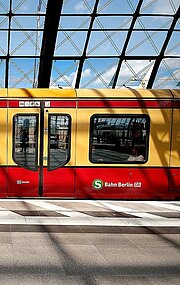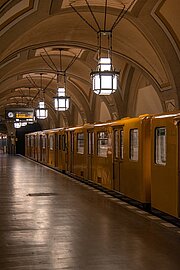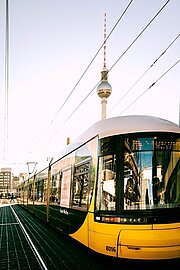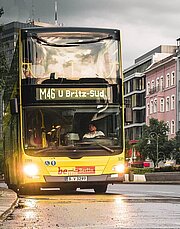
Hertie School students can take advantage of Berlin’s entire public transport system with their student ID and semester ticket. MPP second year Ria Modh explains.
Personally, the public transportation in Berlin is one of the best in my experience. Google Maps has been my best friend ever since I got here in the summer of 2019, since all I need to do is enter my destination to have all the different transportation options laid out, including delays, if any. With your Hertie student ID and semester ticket, you can use buses, the subway, trams, city and regional trains and even ferries to explore the city and its surroundings. Before you know it, you’ll have found your sense of direction and finally understand what people mean when they say, “close to Neukölln”.
Berlin’s transportation network is divided into 3 fare zones. Zone A encompasses most tourist spots and the city centre (and Hertie!). Zone B is the area outside the urban centre, and Zone C includes the greater Berlin area with parts of Brandenburg. Your semester ticket is valid in all these zones. If you unfortunately forget your ticket at home and are caught by the inspector, the fine is 60 euros, but you can reduce it to 7 if you can prove you’re a student with a valid ticket. To avoid the trouble, always remember to carry your ticket with you!
Different types of public transportation

The S-Bahn (Stadtschnellbahn) is Berlin’s rapid transit railway. Most of the system operates on the ground level but a significant portion runs on elevated tracks, giving you a unique perspective of Berlin. Of the 15 lines covered by the S-Bahn, my favourite is the S41/S42 Ringbahn, which circles the entire city centre in about 60 minutes with views of Berlin from above. You can even use the S-Bahn service to reach some of the closer suburbs of Brandenburg like Potsdam!

The U-Bahn (Untergrundbahn) is the largest mainly underground metro system in Germany. After the partition of the city, the U-Bahn network was also divided, leaving Friedrichstraße station as a transfer point and border crossing. Today, trains run every 5 minutes, taking passengers to their respective destinations within an average time of 30 minutes. To accommodate for the Berlin lifestyle, both the S-Bahn and U-Bahn run 24 hours on the weekend instead of the usual 1:30 or 12:30 am during the week.

All regional trains (RE = Regional Express, RB = Regional train) are included in the ABC ticket too. It can be quicker to use these trains instead of the U-Bahn or S-Bahn, particularly if you are travelling from one side of the city to another, or to the airport. However, ICE and CE trains aren’t part of this – these long-distance trains are operated by Deutsche Bahn and require different tickets.

Trams are another great way to tour the city and its history. When Berlin was divided, West Berlin replaced its tram network with buses while the east kept it alive. The legacy of this former system lives on today, and you can generally still tell which area of the city you are in by whether the trams run through there. You’ll notice that the former East Berlin still has an extensive tram network, but only up to Hauptbahnof (Central Station). If you’re looking for a scenic tour, tram line 68 was listed in National Geographic’s “Top 10 Trolley Rides” around the world. It takes you through the largest, greenest and most water-rich district of the city, through the picturesque town of Köpenick.

Berlin also runs an efficient and reliable bus service. The 100 and 200 buses are often double-deckers and unite many interesting sights, in a way acting as “free” tourist buses. They are generally a good option since they cover areas which aren’t usually on other services’ itineraries. After hours, buses are marked with an N and operate all night, replacing the most important U-Bahn day lines.
Lastly, let's not forget the extensive network of waterways and ferries within the city boundaries, which is surprising for a landlocked city. There are 6 passenger ferry routes operated by the BVG (Berliner Verkehrsbetriebe, the city’s main public transport company) as well as several ferry routes that connect islands within Berlin’s lakes. Taking these short boat rides across crystal clear waters during those long summer days are like the cherry on the cake. Sometimes they lead you to fancy restaurants that actually serve delicious cake, or to a bustling beach with swings to jump into the water.

I generally like to go for long walks and explore the city. Public transportation allows to me reach any part of Berlin in a reasonable amount of time and wander to my heart's content. The “cherry blossom avenue” near Lichterfelde Süd Station last spring was truly one of the most beautiful walks, accessible thanks to the U6 and S26.

Due to the global pandemic, it is currently mandatory to wear medical masks in all of Berlin’s public transport. For the latest rules and information, please check berlin.de and bvg.de (in German).

